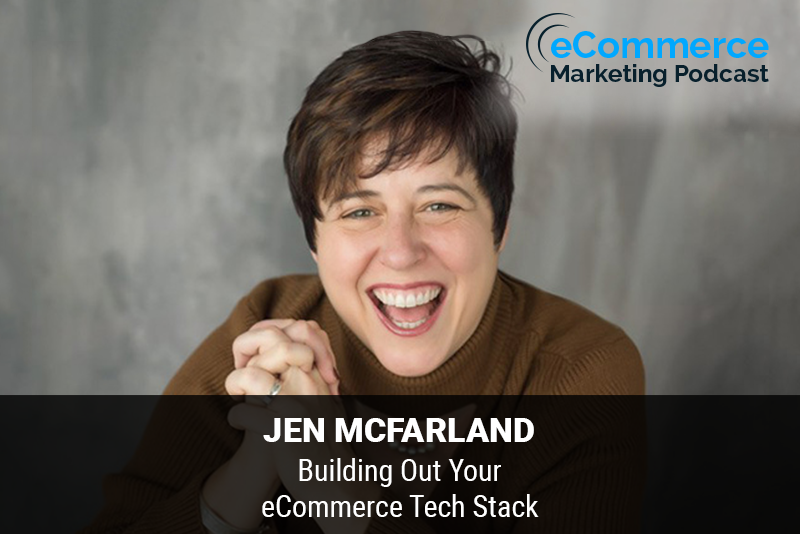
eCommerce Marketing Podcast
The eCommerce Marketing Podcast walks you through everything that goes into ecommerce marketing — from inbound marketing to paid advertising to conversions. Learn the strategies top marketing experts use to grow their businesses.
Building Out Your eCommerce Tech Stack – with Jen McFarland
byArlen Robinson
Marketing Strategies Revealed in this Episode:
- When building or optimizing your eCommerce Tech Stack what is the most important thing to keep in mind?
- The components of an optimal tech stack and the recommended tools and resources that comprise this optimal stack
- How an optimal tech stack help increase your ecommerce sales
- Examples of businesses that have an optimal tech stack and what it looks like

In this episode of the Ecommerce Marketing Podcast, host Arlen Robinson interviews Jen McFarland, the Founder of Women Conquer Business, a consultancy that helps entrepreneurs and small businesses streamline processes, slay technology overwhelm, and amplify their impact. Jen brings her extensive experience in digital marketing and business operations to the table, offering insights into building an effective e-commerce tech stack.
Key Takeaways:
- Introduction to Jen McFarland and Women Conquer Business (00:00:10)
- Overview of Jen’s background in digital marketing and operations.
- Importance of Planning Your Tech Stack (00:06:00)
- Long-Term Goals (00:07:00): Understand your three to five-year business goals to choose the right tech solutions.
- Customer Alignment (00:08:30): Ensure your tech stack aligns with your target customers and industry-specific needs.
- Components of an Optimal Tech Stack (00:12:00)
- Email Marketing Platforms (00:12:30): Recommendations include OmniSend and Klaviyo.
- Productivity Software (00:14:00): Use G Suite or Google Workplace for integrated document management and communication.
- E-commerce Platforms (00:16:00): Use Shopify, BigCommerce, or WooCommerce for robust e-commerce functionality.
- Industry-Specific Tools (00:20:00)
- For Service-Based Businesses (00:21:00): Tools for customer relations management, HR, and invoice management.
- For Restaurants (00:22:00): Inventory management and delivery integration tools.
- Integration and Seamless Operations (00:26:00)
- Centralized Systems (00:27:00): Ensure all tools and systems integrate seamlessly, especially for key operations like payments and inventory management.
- Preparing for Explosive Growth (00:30:00)
- Customer Experience Optimization (00:31:00): Make the purchase process easy on all devices.
- Load Testing and Scalability (00:34:00): Ensure your hosting can handle high traffic volumes to avoid crashes during peak times.
- Case Study: Thunder Pants USA (00:40:00)
- Customer-Centric Approach (00:41:00): Using customer feedback to optimize tech stack and overall customer experience.
- OmniSend Integration (00:42:00): Leveraging OmniSend and other plugins to manage the customer journey from start to finish.
Guest Information:
Jen McFarland
- Founder of Women Conquer Business
- Website: Women Conquer Business
- LinkedIn: Jen McFarland on LinkedIn











